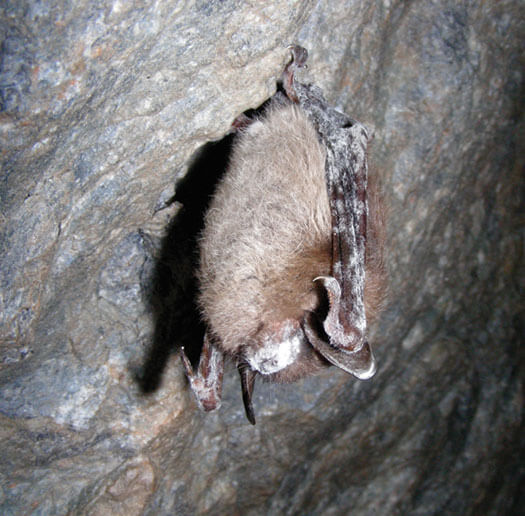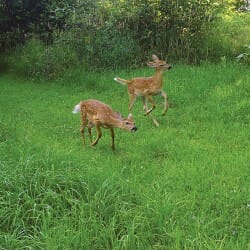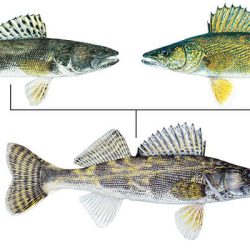To the Bat Cave!
The curious case of the expiring bats is one step closer to a solution, thanks to work done by UW–Madison researchers. For several years, scientists were baffled by falling bat populations in North America, as the flying mammals died due to a mysterious ailment called white-nose syndrome. But a team led by School of Veterinary Medicine honorary fellow David Blehert has proven that the animals are victims of a fungus called Geomyces destructans. In a controlled study, the group took several dozen little brown bats and divided them into three groups. The first had no contact with G. destructans; the second was infected with the fungus; and the third was not infected directly but was exposed to the bats that had the fungus. By the end of the study, the bats in the first group remained healthy, while nearly all the bats in the other two groups showed signs of white-nose syndrome. But the mystery isn’t completely solved, notes Jeff Lorch ’05, PhDx’12, lead author of the study. G. destructans is widespread in Europe, yet doesn’t seem to be killing bats there. “We can now continue to look at both the fungus and North American bats to try to find out what about the fungus makes it so deadly here,” he says.
Published in the Spring 2012 issue




Comments
Henu March 13, 2012
Bats are indeed irlbedince creatures. Five years back I spent three nights at a cave in Death Valley, along the Cotton Wood Canyon trail. It is a dry wash trail following a sandstone slot canyon up to higher elevation. Every evening, the bats would literally swarm out of the cave over our heads in search of insects. It was exciting to watch them fly in seemingly perfect synchronization leaving the cave. I took some cool photographs of them against colorful vertical sand stone canyon walls. It it is sad to think that they are in peril. I’m hoping the very dry environment will serve as a boundary for this fungal infection and spare our local species. Given that winter temperatures rarely drop below 55 deg. F, I doubt they are a hibernating. Any projections on expected impact on desert Southwest species?